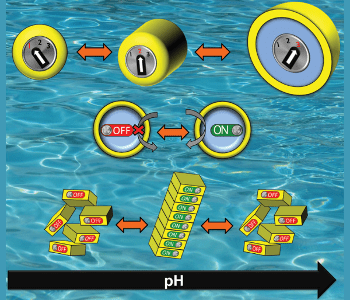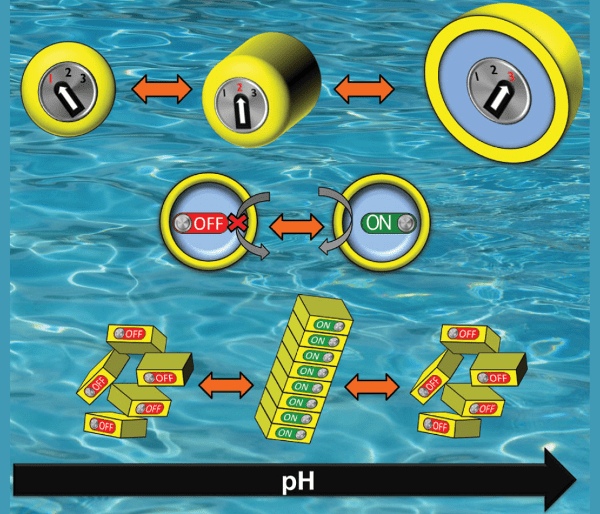Selected as one of the most important publications of the past year and now presented for a second time in The Best of Macromolecular Journals Edition 2016, the feature article of P. Besenius and H. Frisch reviews recent strategies of designing pH-responsive materials.
Self-assembled materials present structures with well-defined order and unique functionality. The autonomous organization of these materials dictates a strong dependence on the surrounding environment: a broad range of chemical, physical and biological stimuli can directly impact on the response of these materials. In living cells and tissues, pH values are meticulously regulated, but can be altered in cases where, e.g., inflammation or tumorous sites are present. The pH value of aqueous solutions is therefore an important consideration regarding stimuli for biomedical applications.
The authors focus on important developments concerning pH-regulation in supramolecular functional materials in water. The self-assembly of building blocks into pH-responsive materials is discussed, alongside assemblies developed from small molecules and surfactants, building blocks derived from biological macromolecules, and the controlled self-assembly of oligopeptides. Details of reversible triggered transitions and varied embedded functionalities are provided. With applications such as cargo delivery and sensing, pH-regulated self-assembled materials are an emerging class of precise, controllable agents for molecular imaging and therapeutics. The feature article is published in Macromolecular Rapid Communications.
The Best of Macromolecular Journals Edition 2016 is a special reprint issue highlighting the most impressive contributions from over one thousand articles published across the Macromolecular Journals family in 2015. All of these articles are free to access for one year. Find out more at www.best-of-macros.de.


















